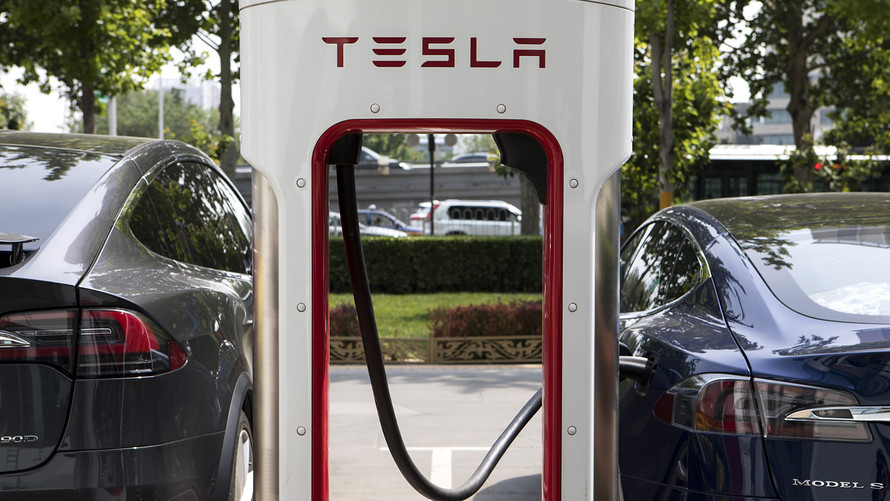In a world where innovation is the heartbeat of progress, Tesla’s latest Full Self-Driving (FSD) update is turning heads. As of 2023, over 500,000 Tesla vehicles have been equipped with the latest FSD Beta, demonstrating a significant leap in autonomous driving capabilities. This update isn’t just a technical upgrade; it represents a paradigm shift in how we perceive mobility, safety, and the future of electric vehicles (EVs). In this article, we’ll explore how Tesla’s FSD update is paving the way for the future of autonomous EVs, the technology behind it, and what this means for the industry and consumers alike.
The Evolution of Tesla’s FSD Technology
A Brief History of Tesla’s Autonomy Journey
Tesla’s journey toward autonomy began in 2014 when the autopilot was first introduced. Fast forward to 2023, and Tesla has rolled out its most advanced FSD Beta yet. The company has consistently pushed the boundaries of what’s possible, leveraging over a million miles of road data to refine their autonomous capabilities.
- 2019: Tesla released FSD Beta to a select group of testers.
- 2021: The program expanded to more users, gaining valuable feedback.
- 2023: The latest update, FSD Beta 11.4, offers improved decision-making, smoother navigation, and enhanced safety features.
Key Features of the Latest FSD Update
The latest FSD update is packed with features that enhance both safety and convenience:
- Improved Object Recognition: Utilizing advanced neural networks, the system can now recognize objects and predict their movements with greater accuracy.
- Enhanced Decision-Making Algorithms: Allows the car to make split-second decisions in complex environments, such as intersections and busy highways.
- Better Lane Management: The car can seamlessly merge and change lanes, adapting to real-time traffic conditions.
The Role of AI and Machine Learning
Tesla’s FSD technology heavily relies on artificial intelligence and machine learning. By processing vast amounts of data collected from its fleet, Tesla continuously improves its algorithms. This self-learning capability ensures that each update is smarter and more efficient than the last, paving the way for fully autonomous driving.
Impact on the EV Industry and Consumers
Setting New Standards for Autonomous Driving
Tesla’s FSD update is setting new benchmarks in the industry. As reported by TechCrunch, this technology is a game-changer, influencing how other automakers approach autonomous driving.
- Competitive Pressure: Companies like Rivian, Lucid Motors, and traditional giants like Ford and Volkswagen are intensifying their efforts in autonomy.
- Regulatory Influence: Tesla’s advancements are pushing policymakers to adapt regulations that accommodate the rapid evolution of autonomous vehicles.
Consumer Confidence and Adoption
For many consumers, the idea of a self-driving car can be daunting. However, Tesla’s emphasis on safety and transparency is fostering trust:
- Safety First: Tesla’s vehicles have recorded fewer accidents per mile compared to human-driven vehicles, according to InsideEVs.
- User-Friendly Interface: The FSD update includes intuitive controls and real-time feedback, making it accessible for all users.
Economic and Environmental Benefits
- Cost Efficiency: Autonomous EVs reduce the need for personal vehicles, leading to lower transportation costs over time.
- Environmental Impact: With smarter navigation and efficient energy use, Tesla’s autonomous vehicles contribute to reduced emissions and improved air quality.
Practical Insights: How to Experience Tesla’s FSD
How to Get Tesla’s FSD Update
For Tesla owners eager to experience the latest in autonomous driving, here’s how you can get started:
- Ensure Eligibility: Your Tesla must be equipped with the Full Self-Driving package.
- Check for Updates: Regularly check your vehicle’s software update settings.
- Participate in Beta Programs: Sign up for Tesla’s FSD Beta program to receive the latest updates.
Where to Buy a Tesla
Tesla’s vehicles are available for purchase directly through their website or showrooms worldwide. Several countries, including the USA, UK, and China, have dedicated Tesla stores.
Comparing Tesla’s FSD with Other Autonomous Technologies
- Tesla vs. Waymo: While Waymo focuses on fully autonomous taxis, Tesla aims to bring autonomy to personal vehicles.
- Tesla vs. Cruise: Cruise, a General Motors subsidiary, operates in urban areas, whereas Tesla’s FSD is designed for diverse environments.
Conclusion: Embracing the Autonomous Future
Tesla’s latest FSD update is more than just a technological advancement; it’s a glimpse into the future of autonomous EVs. By refining its autonomous features, Tesla is not only setting new industry standards but also reshaping how we envision transportation. As we move forward, the question remains: Are we ready to embrace a world where cars drive themselves?
This evolution is not just about reaching a destination without human intervention; it’s about transforming our relationship with mobility. As autonomous technology continues to advance, so will the opportunities for creating a sustainable, efficient, and safer future. Whether you’re a tech enthusiast, a potential EV buyer, or simply curious about the future of transportation, Tesla’s FSD update is a milestone worth watching. So, what are your thoughts on the autonomous future? Are you ready to let go of the wheel and enjoy the ride?

